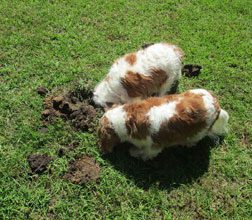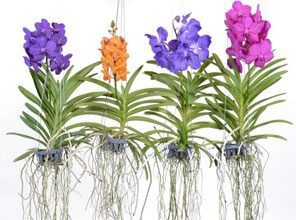 Normally my house plants are happier outside than inside. I keep them outdoors in filtered light with normal rainfall as long as possible. It is a challenge for me to maintain tender tropical plants, because I prefer more independent hardy low maintenance plants.
Normally my house plants are happier outside than inside. I keep them outdoors in filtered light with normal rainfall as long as possible. It is a challenge for me to maintain tender tropical plants, because I prefer more independent hardy low maintenance plants.
House plants that originally come from tropical rain forests are challenged indoors with dry heat, drafts, and low humidity. Humidity at about 50% and sufficient light are required by healthy and blooming tropicals. The floor, counter, and furniture can get wet when saucers crack or break. East or south facing windows are best, but some indoor plant enthusiasts use grow lights. Last year I gave up my upstairs tub and put a metal rack over it to keep my motley collection of “not so happy” house plants. Most of them survived and were not remarkably scarred from the refugee experience. This year I brought them in, hung some in the south facing window of the family room, cleaned off a cluttered counter, plugged in a lamp for supplemental light, and the bromeliads and orchids have really earned their keep. Soon after bringing them inside, orchids and one fabulous, nearly black, Bromeliad which I believe is one of the Aechmea hybrids all started forming buds.
The Pineapple family, Bromeliacea, can be epiphytic, and as such uses roots mainly as attachment to trees and rocks, or plants can be terrestrial growing in soil on the forest floor. My fifth edition Exotic Plant Manual ©1978 estimated that there were nearly 46 valid genera and over 2000 species in the Bromeliad family. Bromeliads are interesting, beautiful, decorative, and easily maintained indoor plants. In the last 40 years since that volume was published there are 51 genera, 3475 species, and, may be split into as many as eight sub-families, according to one internet source. Advances in plant propagation have exponentially increased their availability and made these and other dramatic plants affordable and popular with floral designers and home gardeners.
Orchids are also found in the wild growing as epiphytes or terrestrials. Care, light, humidity and growing media will reflect the provenance or origin of a genus. Most will be happiest in well drained organic media and high humidity. Temperature and light are easiest to control in a greenhouse, but knowing the preference of your orchid will help with siting. They either prefer cool (40-60°F), intermediate (50-65°F) or warm (62-80°F) and up. My recipe is bright light, high humidity, and lots of ignoring. At cooler temperatures plants grow slowly, loose moisture less through transpiration, and may need to be watered or sprayed once a week. They hang out, chill, and don’t demand lots of care. They grow and bloom in the wild with some organic matter, moderate temperatures, and good drainage.
Keep an eye out for pests: scale and mealybugs can be problematic. Leaves should be full and pliable. Promote good air flow and fertilize monthly with a diluted water soluble fertilizers. There are many commercially produced orchid fertilizers that can be purchased or plants can be watered with fish emulsion or compost tea.
For more information on growing indoor foliage and flowering plants check out the Clemson Home and Garden fact sheets:
http://www.clemson.edu/extension/hgic/plants/indoor/foliage/hgic1501.html
http://www.clemson.edu/extension/hgic/plants/indoor/flowering/hgic1560.html






